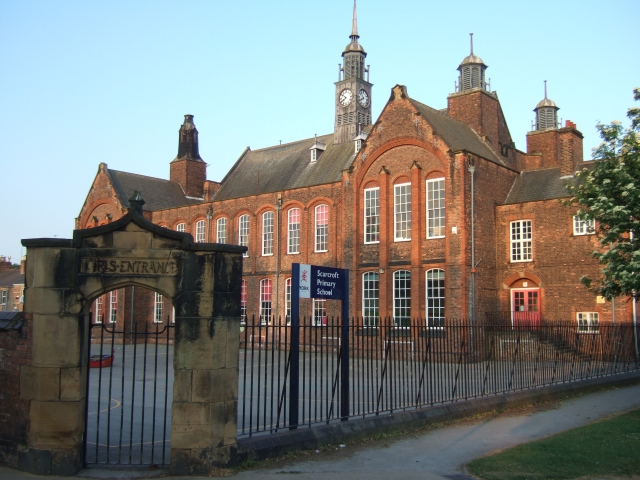Board schools were set up in England and Wales after the passing of the 1870 Education Act. Elected school boards were able to build schools for the country’s rapidly growing population, paid for by local ratepayers, to provide the school places that the voluntary sector could no longer afford, particularly in urban areas. This was the first time that parliament had committed itself to providing education for five to ten-year-olds throughout England and Wales.
1870 Act
Up to 1870 the NationalSchools set up by Anglican clergy and their local supporters, initially run by single teachers using the monitorial system. and British SchoolsEstablishments offering education to the children of Nonconformist parents, initially run by a single teacher using the monitorial system. had built voluntary schools from their own resources at minimal cost to the public purse. The 1870 Education Act was promoted by W. E. Forster, MP for Bradford, to fill gaps in education provision left by the voluntary system at a time when the population was increasing rapidly particularly in urban areas. Passing the Act was the first time parliament had committed to providing education on a national scale. The Act provided for time limited school building grants to be awarded to churches. Anglican churches and the Wesleyans redoubled their efforts to build schools where religious teaching was provided rather than suffer the non-denominational ethos of Board schools which had the support of the British schools movement.[1] Voluntary schools continued unchanged, providing most of their own funding, but board schools were funded through local rates.[2]
The Act stipulated:
- that local education boards should inspect schools to ensure there were sufficient places.
- that elementary education must be provided for children aged between five and 13.
- that schools should be publicly funded.
- that parents had to pay for their children’s eductation, unless they could not afford to.
- that attendance should be compulsory.
- that religious teaching should be non-denominational, and that parents could withdraw their children *from religious education.
- that schools should be regularly inspected to maintain the standard of education.[3]
School boards
Where adequate provision was not achieved, school boards with fifteen elected members were set up. Most boards were split according to local politics and on religious grounds, but women were allowed to stand as candidates for the first time in England. Rural boards were small, with fewer members, but city boards had to provide for thousands of children.[1]
The Act did not make made attendance compulsory, that only happened after a Royal Commission on Factory Acts recommended that school should be compulsory to prevent child labour, and another Education Act passed in 1880 made school attendance compulsory between the ages of 5 up to the age of 10, an Act in 1893 raised the age to 11, and another in 1889 raised it to 12.[2][4]
The churches had difficulty funding the schools after basic fees were abolished in 1891, and Board schools gained the advantage with the support from ratepayers.[5] Board schools, were by no means standardised, but they had to meet standards set down by the Department of Education. Some were designed by local architects who came to specialise in school structures, often with high ceilings and large windows.[6]


